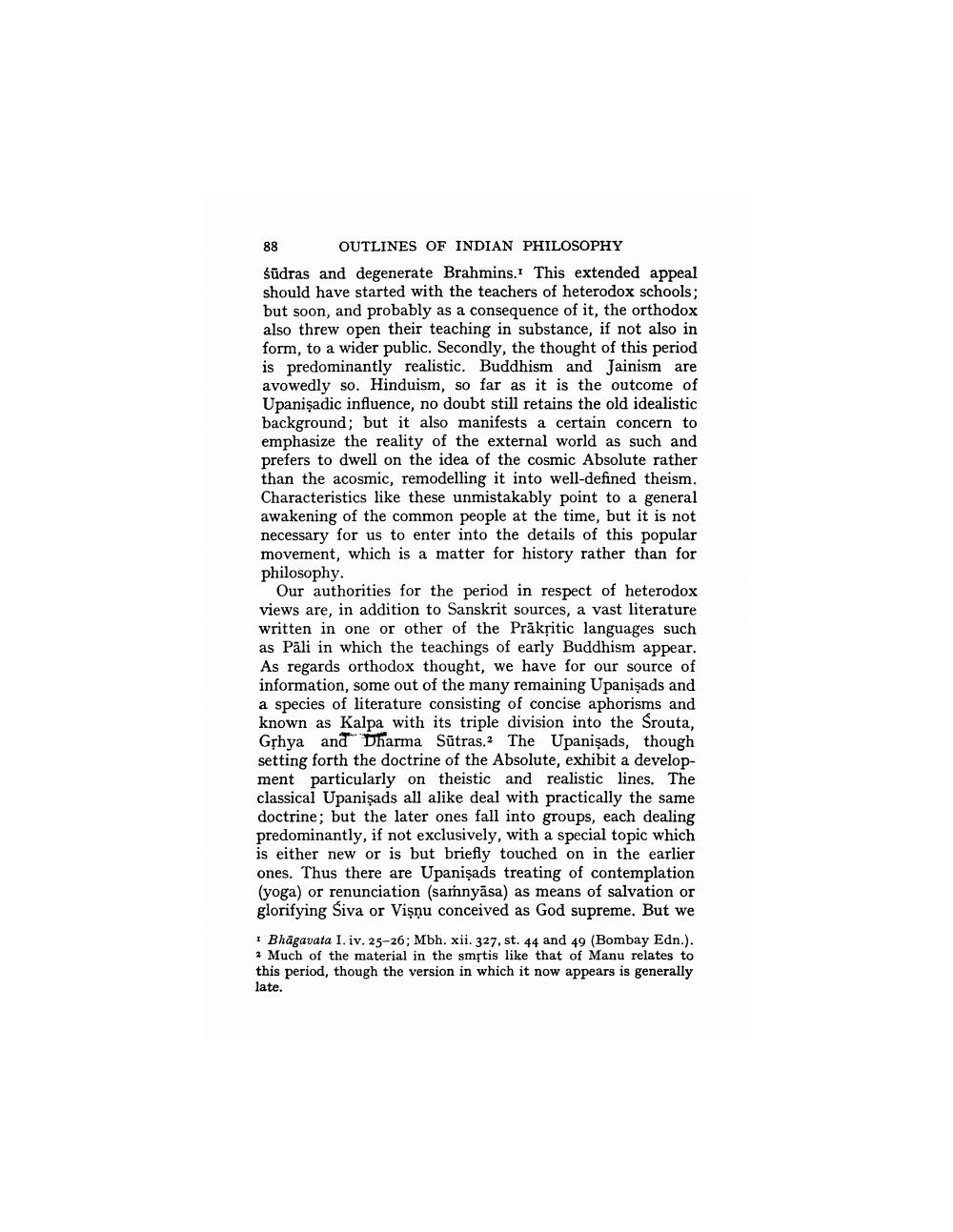________________
88
OUTLINES OF INDIAN PHILOSOPHY Śūdras and degenerate Brahmins. This extended appeal should have started with the teachers of heterodox schools; but soon, and probably as a consequence of it, the orthodox also threw open their teaching in substance, if not also in form, to a wider public. Secondly, the thought of this period is predominantly realistic. Buddhism and Jainism are avowedly so. Hinduism, so far as it is the outcome of Upanisadic influence, no doubt still retains the old idealistic background; but it also manifests a certain concern to emphasize the reality of the external world as such and prefers to dwell on the idea of the cosmic Absolute rather than the acosmic, remodelling it into well-defined theism. Characteristics like these unmistakably point to a general awakening of the common people at the time, but it is not necessary for us to enter into the details of this popular movement, which is a matter for history rather than for philosophy.
Our authorities for the period in respect of heterodox views are, in addition to Sanskrit sources, a vast literature written in one or other of the Präkritic languages such as Pali in which the teachings of early Buddhism appear. As regards orthodox thought, we have for our source of information, some out of the many remaining Upanişads and a species of literature consisting of concise aphorisms and known as Kalpa with its triple division into the Srouta, Ghya and Dharma Sūtras.2 The Upanişads, though setting forth the doctrine of the Absolute, exhibit a development particularly on theistic and realistic lines. The classical Upanişads all alike deal with practically the same doctrine; but the later ones fall into groups, each dealing predominantly, if not exclusively, with a special topic which is either new or is but briefly touched on in the earlier ones. Thus there are Upanişads treating of contemplation (yoga) or renunciation (sarnyása) as means of salvation or glorifying Siva or Vişnu conceived as God supreme. But we
1 Bhagavata I. iv. 25-26; Mbh, xii. 327. st. 44 and 49 (Bombay Edn.). - Much of the material in the smptis like that of Manu relates to this period, though the version in which it now appears is generally late.




